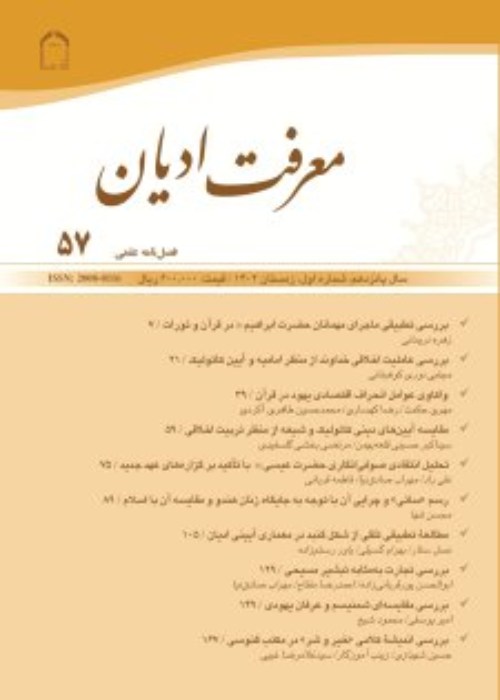An Investigation of the Theological Thought of "Good and Evil" in the Gnostic School
One of the most fundamental topics of mystical and theological schools is the matter of "good and evil" and its attribution to the origin of creation; being issued from one source or two sources. Being influenced by the culture and beliefs of various nations, especially the influence of the Orient, the Gnostic school, which emerged at the beginning of Christianity, has special views about the origin of good and evil and their authenticity and relationship with God. This essay tries to provide a descriptive-analytical explanation of these views to answer this fundamental question: what are the examples of good and evil in the Gnostic thought and how is their relationship with the realm of divinity? The special sign of the Qumran community in the Old Testament is the dualistic tendency, which was not extended to the realm of divinity in the initial stages of its division or assignment by Simon Magh, the father of the Gnostic religion, in the early stages; but in the second century AD, the Gnostic Marcion who raised questions about the nature of good and evil and their relation to God, established polytheism. He accepted the principle of "duality", just like his like-minded Gnostics, such as Kerdo and Lukyan, in imitation of ancient Iranian mysticism, and later with the appearance of Mani, this principle became one of the Gnostic teachings and became global. However the orthodox Christians believed that the Gnostics have doubted the unity of God in the religion of Jews and Christ by proposing the God of evil and the supreme God; and this was not acceptable to them at all. What led, in fact, to the belief of dualism and the separation of the God of good and evil by the Gnostic leaders of the second century, was the inability of the Gnostics to recognize the relativity of evil and its familiarity among all beings other than God and the introduction of the character of "Sophia" as the divine female face by Simon in the following centuries.
good , evil , Gnosticism , dualism , Christianity
- حق عضویت دریافتی صرف حمایت از نشریات عضو و نگهداری، تکمیل و توسعه مگیران میشود.
- پرداخت حق اشتراک و دانلود مقالات اجازه بازنشر آن در سایر رسانههای چاپی و دیجیتال را به کاربر نمیدهد.



